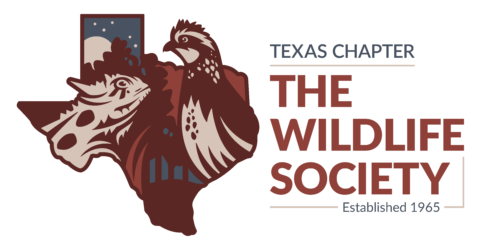The Clarence Cottam Award is the most prestigious student award given by the Texas Chapter of the Wildlife Society to recognize and promote student research excellence in wildlife biology, conservation, and management. Selected participants will have the opportunity to present their research to the entire membership. The winners are recognized for their outstanding research contributions, awarded a scholarship, and become part of the more than 30-year history of the Clarence Cottam Award.
The first place prize is a $1,000 scholarship sponsored by the Welder Wildlife Foundation. Second and third place prizes are smaller scholarships sponsored by the Texas Chapter and awarded if more than 6 papers are accepted. A maximum of eight papers will be included in the competition, with any additional submissions encouraged to present during regular concurrent sessions.
Students must be the senior author of the abstract and oral presentation. Research projects should be nearing completion so that results and their interpretations can be included. Only students that are affiliated with a Texas college or university at the time of research OR If affiliated with a non-Texas based college or university, students that have conducted their fieldwork in Texas, are eligible to compete. Students who have graduated since the last meeting are also eligible if they are currently members of the Texas Chapter of the Wildlife Society.
Cottam Award participants are required to submit two abstracts: one abbreviated abstract and one extended abstract. The deadline for submission of both abstracts is November 30, 2023. Submit Abstract
The abbreviated and extended abstracts should follow instructions outlined in the general call for abstract submission from the program committee. The extended abstract must be submitted online at the same time as the abbreviated abstract, be less than or equal to 3 pages, and in the style and format of the Journal of Wildlife Management (JWM). Abstracts should include a statement of objectives, brief description of methods used, concise presentation of results, and a summary of conclusions and inferences drawn. Do not include tables, appendices, or a literature cited section.
In addition to neatness and conformity to JWM style and format, abstracts are judged based on the following criteria:
- Significance and originality of ideas
- Creativity of research design and implementation
- Quality of methodology, including statistical analyses
- Validity of conclusions drawn from the results
Questions can be directed to the Cottam Awards chair.
Ready to enter the Cottam Awards Contest? Submit Abstract



